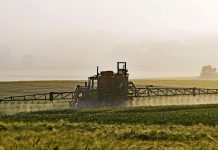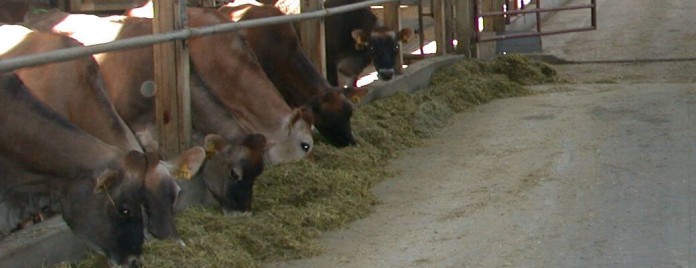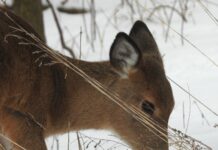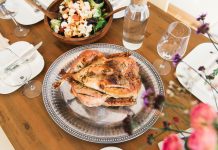“The mystery of the disappearing dollars” … Sounds like the title of a Scooby Doo mystery my son, Ben, would have read in the fifth grade; or “Where have all the dollars gone…” hummed to the tune of a 1960s folk song.
Silly, yes, yet they refer to a very real situation on dairy farms today. Where are the dollars going?
By the numbers
Let’s turn to the Ohio Dairy Farm Business Analysis Summary for some clues.
In the Sept. 3 column, we looked at the big picture costs of production including feed, direct, and indirect costs. Feed costs are clearly number one with total average feed costs making up more than 57 percent of total direct and indirect costs for 35 Ohio dairy farms in 2013.
Averages are interesting and sometimes useful, but how do they apply to farms of different sizes? Fortunately, we are able to break out income and expenses by herd size for the Ohio data in Table 1.
Table 1: Costs and net return by dairy herd size
Average of 51-100 101-200 201-500 Over 500
35 farms Cows Cows Cows Cows
Feed cost/cwt $12.10 $14.62 $12.03 $12.24 $11.81
Direct costs/cwt $19.23 $20.98 $18.87 $20.10 $18.52
Overhead costs/cwt $1.90 $2.28 $2.46 $1.83 $1.73
Total direct &
overhead costs/cwt $21.14 $23.25 $21.33 $21.93 $20.25
Net return/cow
(before labor & mgt.) $544 $621 $454 $425 $693
Source: 2013 Ohio Farm Business Analysis and Benchmarking Dairy Summary
As a percent of both direct and total costs, feed costs are the number one cost on farms of all sizes, ranging from 56 to 63 percent of total direct and indirect costs. These costs include purchased feeds and the total cost of production for all raised feeds fed to the milking cows, dry cows and all replacements. These costs should include all the expenses for feed lost to shrink through all growing, harvesting, storing and feeding processes. Even though the cows didn’t eat it, someone has to cover the cost and on a dairy farm that is the cows.
- Table 2: Top 10 Costs by Herd Size
Average of 51-100 101-200 201-500 Over 500 % of
35 farms Cows Cows Cows Cows Costs1. Feed Feed Feed Feed Feed 56-63%
2. Labor Labor Labor Labor Labor 6-12%
3. Depreciation Dep. Dep. Supplies Depreciation 5-6%
4. Supplies Supplies Supplies Dep. Supplies 3-4%Source: 2013 Ohio Farm Business Analysis and Benchmarking Dairy Summary
What to cut
On every farm there are opportunities to lower feed costs by identifying and fixing where feed is lost (nothing I hate more than driving by a field where corn or hay is being chopped and watching forage be blown on the ground when the chopper turns and the blower is not adjusted to keep blowing into the wagon.)
Other areas include feed lost to poorly applied silo covers, torn bags or wraps on bales, spillage during mixing and delivery, etc.
Interestingly, hired labor is the No. 2 cost across all farm sizes, ranging from 6 percent on the smallest farms to 12 percent on the largest.
Other costs
It is only when we get to the third and fourth highest costs that we see any variation between farm sizes. For all but the herds with 201 to 500 cows, depreciation is the No. 3 cost and supplies is No. 4. They are switched for the 201 to 500 cow herds. These two costs make up 8 to 10 percent of total costs.
Depreciation is not a direct cash cost — no one writes a check made out to “Depreciation”, but it represents the use of the resources of the business, and for farms with debt on these items, it may be somewhat representative of scheduled principal payments.
The last six categories of the top 10 expenses on dairy farms are much less uniform. Table 2 shows how they sorted out for 35 Ohio dairy farms in 2013. There were numerous ties, indicated by shaded items in the same column. A key to note here is that the items ranked sixth through 10th made up only 1 to 3.6 percent of total expenses.
Where to start
As your team looks for your farm’s disappearing dollars, feed is an obvious place to start. If your silage isn’t already “in the bag” or bunker or upright silo, getting it in at the right moisture, packed correctly, using an appropriate inoculant (check out Dairy Issue Brief #8-09 “In this time of tight cash flow, should I use silage additives this year?” at http://dairy.osu.edu) will go a long way toward controlling next year’s feed costs.
Look for opportunities to reduce shrink and work with your nutritionist to feed a well-balanced ration.
Don’t ignore other costs
Feed costs are certainly in the crosshairs, but all of the dollars are not disappearing into the feed mixer.
In the next column, we will look at using benchmarking charts to pinpoint other areas that may be siphoning off dollars on your farm.













